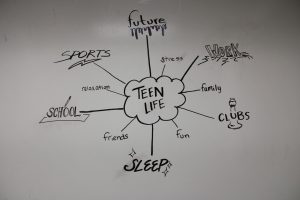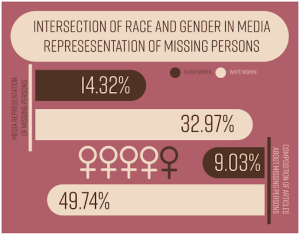A Spirited Debate
March 5, 2018
Although school spirit days are meant to be an occasion that encompasses the entire school and brings a strong feeling of pride and unity despite our individual differences and beautiful originality, the approach of choosing and implementing them has been a topic of contention.
The process is intended to be simple: Student Leadership representatives talk to their peers to determine suggestions for spirit days, discuss the ideas, and present a short list to the administration. Administration looks over the spirit day propositions, decides which ones are approved and denied, informs Student Leadership of their decision, and the complicated task of advertising begins.
Despite what is supposed to be a simple and problem-free task, Student Leadership is dissatisfied with the process and the lack of influence their voices have on the administration’s final say on spirit days.
“I just feel like they’re restricting us,” Dulce Garcia, a member of Student Leadership, explains, “we could do a lot more if it weren’t for that.”
Rightfully so, Student Leadership has justified reasons for being frustrated about the final state of their hard-thought-out ideas: a stubborn no from administration, usually with little to no explanation of their decision.
“I think there could be some improvement in how they [the administration] go about choosing spirit days, whether that be a vote, suggestions, or discussions with their Student Leadership about it, instead of just saying no.” Bethanie Craft, the President of School Events and a member of Student Leadership states. Craft says that she understands, and is “very appreciative and grateful for the opportunities that they give us.”
Administration insists that they seriously consider and debate every spirit day that is presented by Student Leadership. When asked if administration is aware of the discontent from the student body about the choice of spirit days, Melissa Laferrara, one of the three Activities Directors, confirms that they know about and sympathize with the frustration.
“I want to make sure that they understand that the decisions I make are only to benefit the school and to bring us together, not to shoot down all of their wonderful ideas,” Laferrara assures.
Concerning some of the new spirit days that have been suggested, Laferrara responded, “We have listened, and we’ve tried to make some of those changes work. I just want them to understand how it is on the other side; our goal is to make sure that this school feels united as one.”
Admittedly, labeling administration as the antagonist is the wrong move, and it certainly does not make the process of brainstorming and implementing spirit days any easier. On the other hand, claiming Student Leadership is to blame wouldn’t be appropriate, either.
The trouble, however, is the lack of communication between the administration and Student Leadership, especially in trying to understand why some Leadership’s ideas are denied and what changes need to be made.
“I think they’re scared. I also think they’re looking out for the majority of the population, and if a majority of that population feels a certain way, then they will cut it, which makes sense,” Craft admits.
It’s hard to make changes to the process of brainstorming spirit days when Student Leadership is left to make guesses and assumptions.
“I think they deny it because they think of what could go wrong, and I think that’s important to see the possibilities, but they also need to not be taken so seriously,” Garcia responds.
Haley Peabody, also a member of Student Leadership, adds, “I think that we hear it from our peers and what they want, so I think we’re a better representation of what everyone wants, whereas they [the administration] just think about what they assume everyone will want.”
The administration’s insight into why certain spirit days are rejected is a surprisingly simple and understandable reasoning.
Laferrara admits that she tries to avoid spirit days where “we [the administration] aren’t including everybody, like when you guys [the student body] split up by classes. To me, it should be very obvious when you look at somebody that they’ve participated in that day.”
The disagreement between students and administration can possibly fade, but it will never disappear. Student Leadership and administration are far from enemies; it’s the simple presence of different perspectives from both sides that stalls change to the future of spirit days at Eaglecrest. A common ground must be met, meaning both Student Leadership and administration must be open to new input, and make serious and calculated attempts at understanding one another’s outlook.
Garcia offers a possible solution: “[Administration] should have Student Leadership at meetings, not just teachers and other administrative members.” Student Leadership and Administration have been scheduling time to discuss ways to improve the school, which is certainly a huge step in the right direction.
Until a common ground is met (something that both Student Leadership and administration are striving to create), Laferrara encourages us to remember that “we are Eaglecrest, we are proud, and we do things the RAPTOR way.”
Regardless of what spirit days are chosen, our immense participation as a student body and staff creates an environment that is welcoming, prideful yet humble, and unifying; a feeling only experienced in the halls of Eaglecrest.







